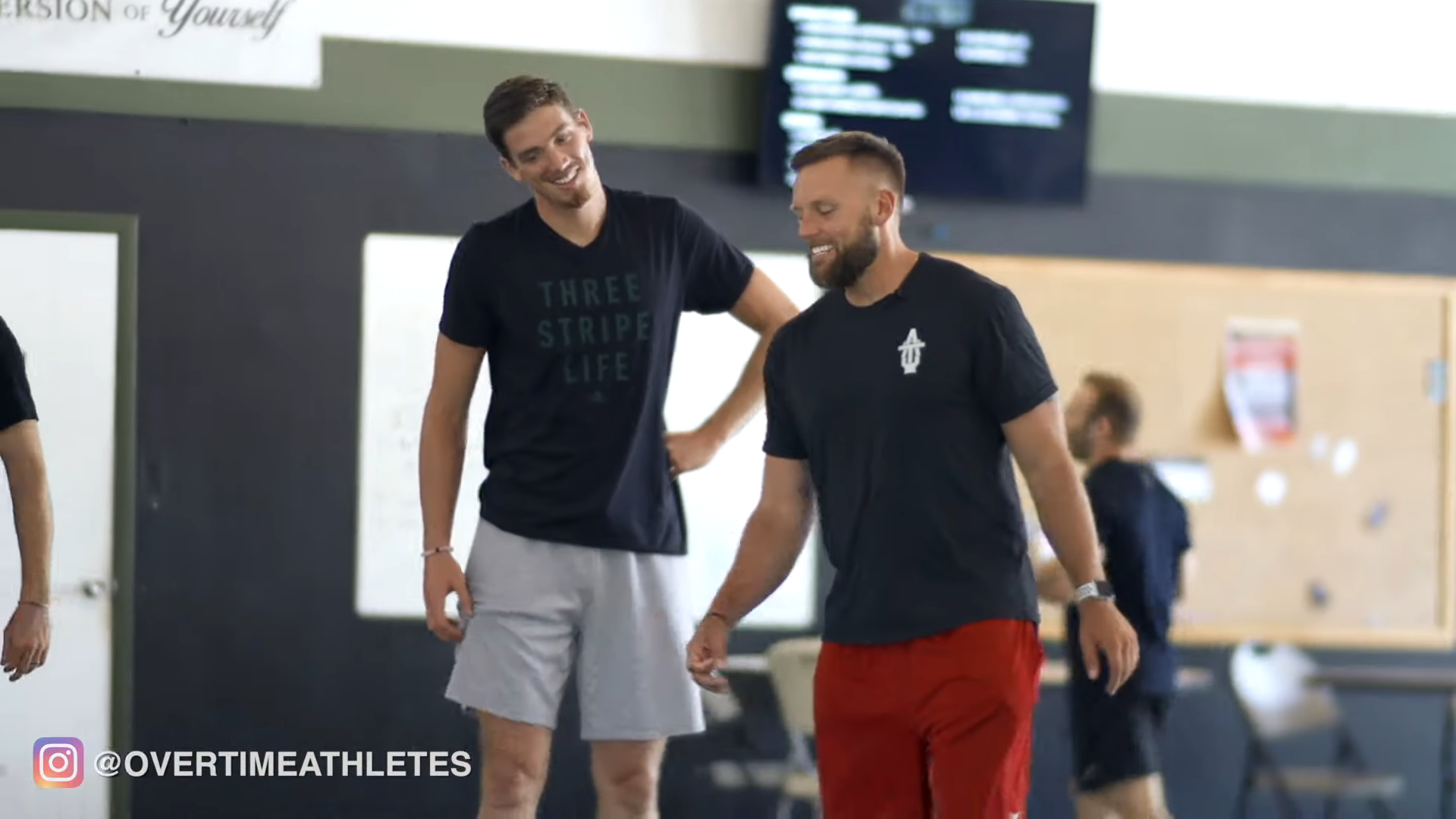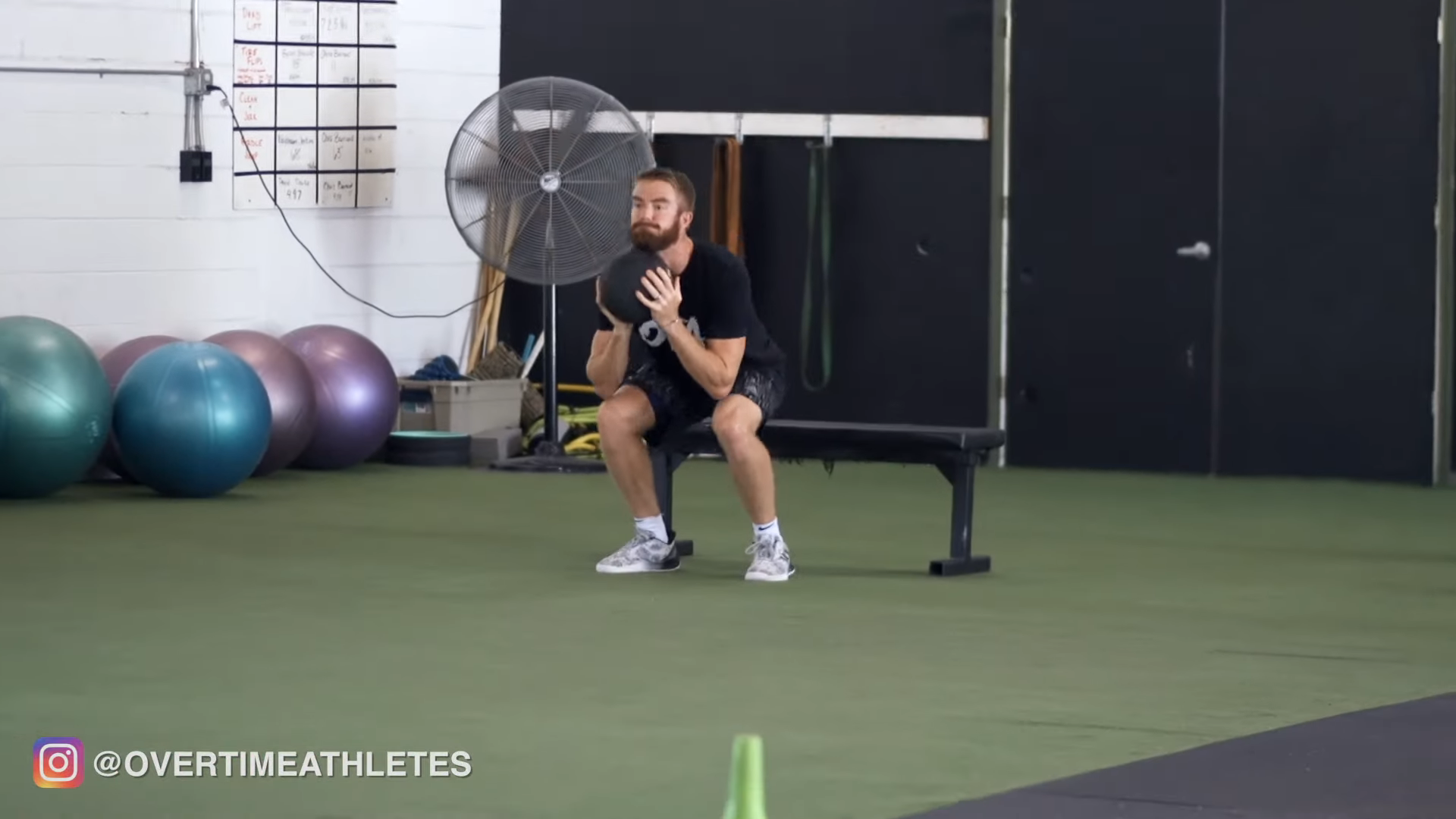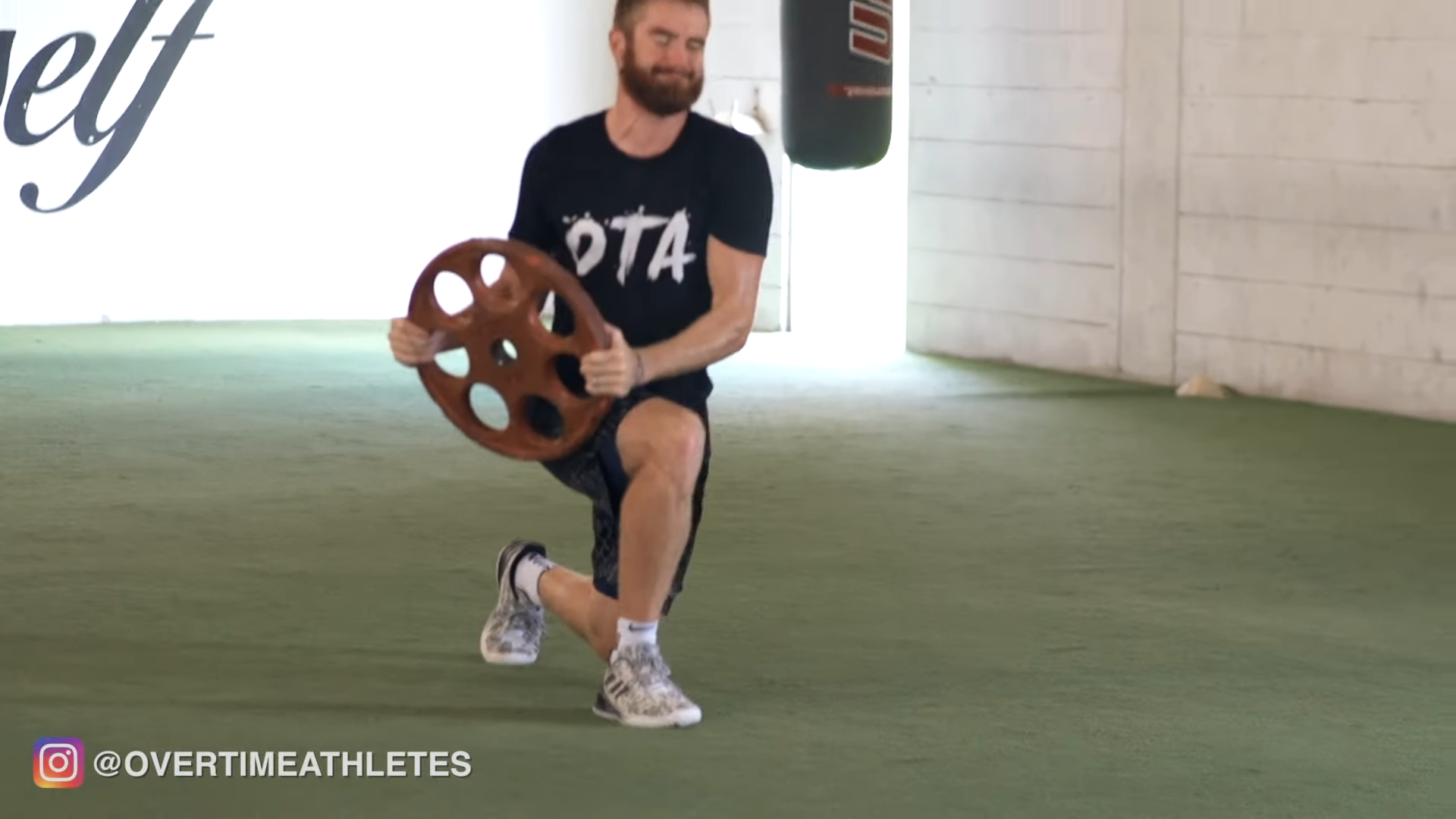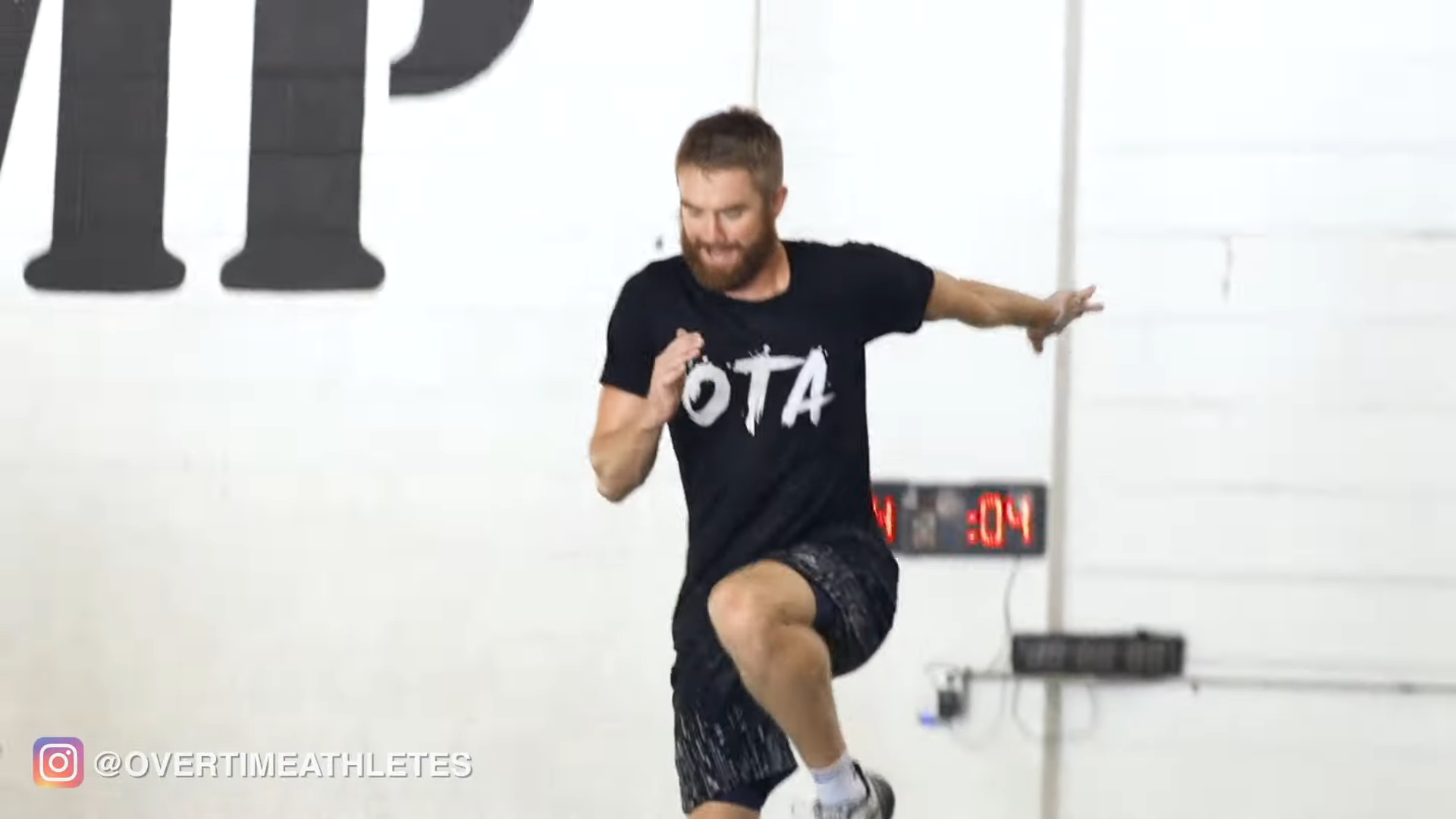Lower Body Power Training for Basketball
I get a lot of questions about how to train for basketball. While I’m working on a post for that (it’s coming in the near future), I want to share an actual workout I ran my NBA guys through.

Last month was their last month, so I was focused on peaking their power before they head off to camp.
To do this, I utilized things such as accommodating resistance, contrast training, reactive plyometrics, and a bunch more.
Below, I’m going to share the exact movements I performed with my NBA guys to peak their power, and I’ll share some notes on why I selected those movements.
Here’s your Lower Body Power Training Workout for Basketball:
Power Training for Basketball
The movements I selected below are designed to peak the basketball athletes’ explosive power, enhance body control, and peak their strength. Each movement was carefully and thoughtfully selected to work in conjunction to achieve the goals above.
Here’s the list of the movements, with explanations for each move.
Depth Drop Series
The standard depth drop is a movement I use to teach the athlete to land, and absorb force, properly. Anything added on to the depth drops adds a reactive component to the movement.
The variations I used in the lower body power training workout for my basketball guys were:
- Depth Drops
- Depth to Vertical Jump
- Depth to Split Lunge
- Depth to MB Vertical Toss
I selected the depth to vertical jump to continue to teach my basketball guys’ bodies to react quickly off the ground. This is absolutely essentially when grabbing rebounds, elevating for a dunk, or blocking a shot.

This also teaches them to absorb force off of the high impact of a vertical jump.
The depth to split lunge adds a body control element to the depth to vertical jump. As the basketball athlete is recovering from his vertical jump, he shifts his body position in the air, so that he lands in a split lunge position.

Landing in this position works the athlete’s capacity to absorb force as well as teaching body control.
Finally, the depth to med ball vertical toss teaches the athlete to transfer force from the lower body through the upper extremities. In order to be successful in this movement, the basketball athlete must brace the core while landing, then coordinate the extension of the hips and knees, with the extension of the upper extremity. If the tightness in the core is lost during landing, the force exerted by the athlete will be lost as well.

Contrast Training
Contrast training is a method for turning strength into power (I talk more about it here). Essentially, it’s performing a movement with a heavy load to heighten the nervous system, then applying the heightened nervous system to a lighter load. This allows the athlete to move that load more forcefully and explosively.
It only makes sense that I’d use this method while peaking an athlete.
In this lower body power training workout, I use contrast training in an unconventional way.
Here, I use a weighted plyometric movement in conjunction with box jumps.
- A: Trap Bar Jumps
- B: Box Jumps
I slapped 45 pound plates on each side of the trap bar and had the basketball athletes perform five reps of controlled, connected jumps.
This, again, heightened their nervous system.
After completing the trap bar jumps, they moved over to box jumps, where their heightened nervous system allowed them to produce more force.
To see Contrast Training in action, follow this link.
Strength
In the strength section, I used a multitude of movements to peak their strength and power.
- Trap Bar Deadlift
- A: Integrated Lunge
- B: Sprinter Step Ups
- Banded KB Swing
The trap bar deadlift has slowly become one of my favorite movements to use. It’s very safe for athletes to perform it, there’s not a high learning curve, and studies have shown that athletes can produce higher peak forces when performing a trap bar deadlift compared to any other movement.

It’s become a staple in my training of athletes.
Next up is the integrated lunge. This movement teaches the athlete to force couple the torso and lower body, and I use it as athletes get closer to the season. In between the sets of integrated lunge, I’ve programmed Sprinter Steps, which are a plyometric movement that mimics a sprint, and but adds a plyometric element to it.

When you combine these two moves, they are powerful, as they work the same movement pattern in two different ways.

Finally, I used the accommodating kettle bell swing.
Accommodating resistance is essentially adding chains or bands to remove the need for deceleration on the athlete’s part through a movement.
In this case, I’m giving the athlete a bend pattern to perform at high velocity to, again, peak his power before the season starts.

More Workouts Like This
If you want to find more explosive workouts like this, you can look into The Flight System.
That’s my vertical jump program that had a huge hand in boosting my vertical up to a staggering 44 inches.
And this workout I just laid out for you is very similar to the workouts you’ll find in the final month of The Flight System. However, you’ll have to do the entire program to see massive results.
Give it a look here:
===>Click Here for More Power Training